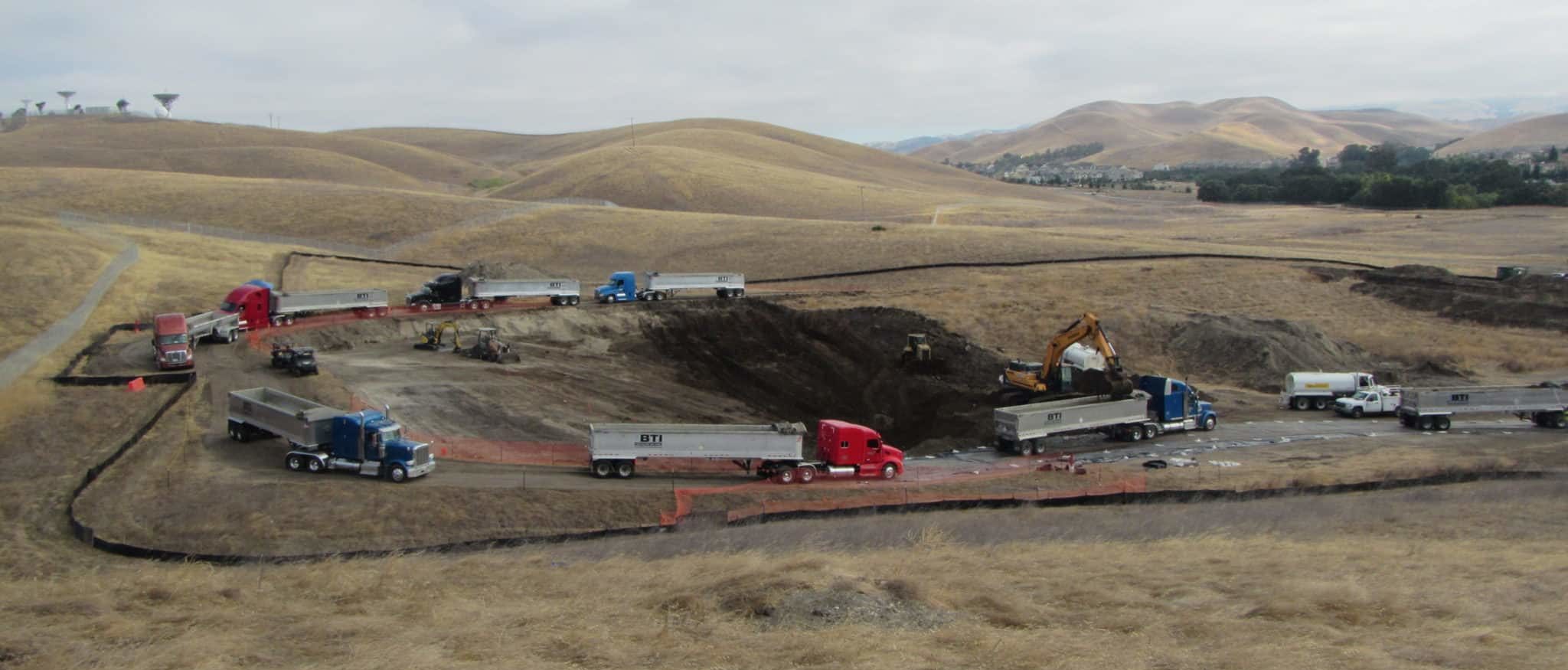
Camp Parks Landfill and Burnpits Environmental Remediation Services
Dublin, California
Successful Camp Parks Environmental Cleanup Through Communication, Collaboration, and Persistence
Ahtna Environmental recently completed a 32,000 cubic yard cleanup project at the 2,500-acre Parks Reserve Forces Training Area (PRFTA – aka Camp Parks) for the USACE Los Angeles District and the Army Environmental Command. This CCPRFTA-06 cleanup was initially supposed to be a small excavation but evolved into a large-scale excavation involving more than 200 personnel—all requiring access clearance. The objective was to remove and dispose of hazardous waste soil/debris from three former burn pits and regrade the area to blend with the surrounding hillside topography.
The COVID-19 pandemic presented a significant and unexpected obstacle. New COVID-specific standard operating procedures were created, requiring frequent updates to keep pace with real-time federal, state, and county health guidance changes. The plan contained strict protocols for all elements of fieldwork. The new safety protocols were not only comprehensive, but also proved to be effective. The procedures covered more than 20 full-time, on-site staff working within the site, as well as 20 to 60 truckers hauling contaminated soil from the site.
Besides the COVID-19 challenges, obstacles were encountered with the cleanup from the very beginning. In 2015, a need to collect more data was identified to determine the cleanup volume of hazardous waste more accurately. The Army and Ahtna conducted a waste characterization study to define the scale of the excavation more clearly. The reassessment proved extremely insightful, revealing that four times more waste needed to be excavated from the site than originally thought.
The reevaluation of the initial data also netted another important benefit. Originally, the cleanup approach was to remove everything in the former burn pit. But the investigation revealed the dividing berm areas were largely uncontaminated soil and were clean enough to reuse. This prevented 7,000 cubic yards (500 truckloads) of soil from being unnecessarily disposed of at a hazardous waste landfill 200 miles away. It also meant trucking in an equivalent amount of clean backfill was not needed, saving weeks of work and significant cost for the Army.
The project also faced challenging regulatory requirements. Initially, the documentation and cleanup process followed the requirements of CERCLA however consensus of all stakeholder was difficult to reach. As a result, the project stalled and the cleanup decision documentation underwent years of rigorous review, renegotiation, and restructuring. With persistent and continuous collaboration between Army leadership and the regulators, a path was forged to move the project forward.
In 2020, the Army, as the lead agency, proceeded with an innovative alternative approach to address contamination posing an unacceptable risk. They determined the cleanup could be completed as a non-time-critical removal action. Consequently, new documents paralleling the previous CERCLA documents were quickly created.
Despite COVID-19, regulatory delays, rerouting issues and other project challenges, the Army and Ahtna successfully completed the project in October 2020—within the original excavation and regrading budget. The successful completion of this important environmental cleanup came down to three essential factors: communication, collaboration, and persistence.




